
CDMA in Random Access Nets
Direct-Sequence CDMA can increase the throughput of a random access network, such as an ALOHA network.
If a spreading factor N is applied,
- the receiver is likely to be able to separate up to N signals from different users.
However, imperfections in the receiver, substantial power differences, eroded orthogonality because of timing misalignments all may reduce the receiver's ability to
detect multiple signals.
On the other hand antenna array processing and diversity may increase that number of simultaneously captured signals beyond N.
- If the system uses the same bandwidth as in the narrowband (non-spread) system, spreading by N implies that the user bit rate must be reduced by a factor N. Hence the duration of a time slot to transmit a block of bits must be increased by N. This affects the delay performance of a CDMA system.
If packet arrivals form a Poisson process, CDMA has advantages because of the Law of Large Numbers. Let's normalize the transmission time of a data packet in a non-spread system to unity. For a spreading system, with spread factor N, the transmit time is N.
Let's denote the average arrival rate in an unspread system as l packets per slot (= packets per unit of time).
In the spread system, the arrival rate is Nl.
The throughput S equals l times the probability that the number of arrivals is N or less, thus,
N-1 (Nl)k
S = l exp(-Nl) Sum ------
k=0
k!
See also: Delay-Throughput curves
Boat analogy
The advantage of CDMA is explained by drawing an analogy
between packet transmission in a time slot and
people boarding on a boat.
| | | Random Access Radio | Passengers on a Ferry
|
| | | Packet transmissions | Passengers arriving
|
| | | Spreading factor N | Boat capacity (=N)
|
| | | Slot duration (=N) | Boat interval (=N)
|
| | | Idle slot | Empty boat
|
| | | Capture | Person(s) in a boat
|
| | | Destructive collision | Boat sinks
|
| | CDMA spread factor = 6
Non-spread
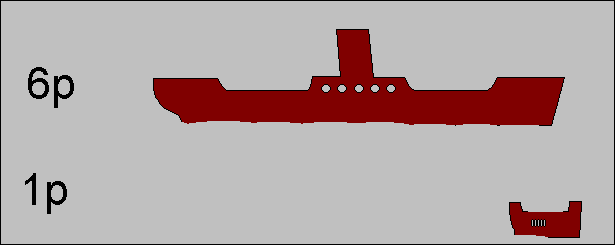
| |
Step by Step
Here we work out an example with CDMA spreading of N = 6.
A scenario with large boats, seating six is compared with small single person boats.
| |
|
| | 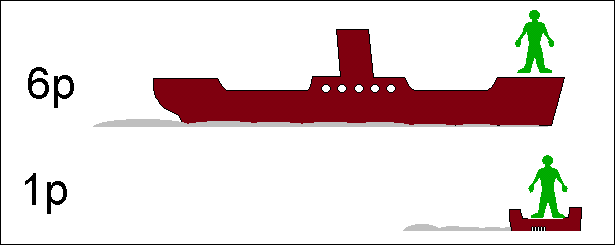 | 1 new arrival
Successful in both scenarios.
|
| |
|
| | 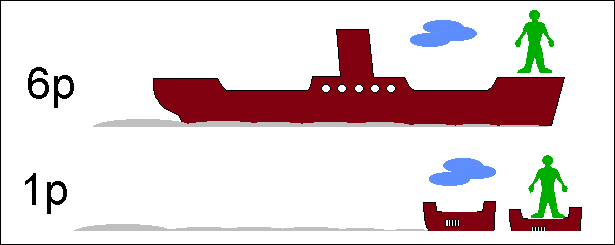 | no new arrival
|
| |
|
| | 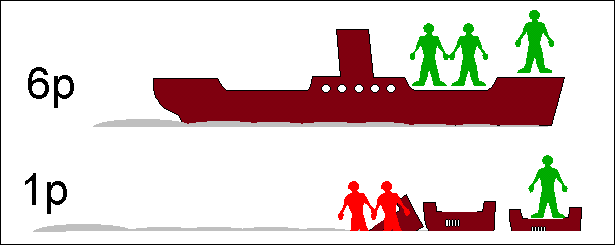 | 2 new arrivals
In the event of narrowband transmission (small boats), transmission is unsuccessful
the boat sinks.
|
| |
|
| | 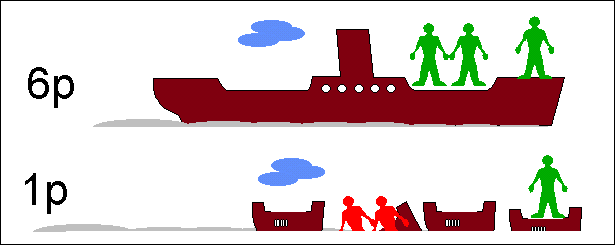 | no new arrival
|
| |
|
| | 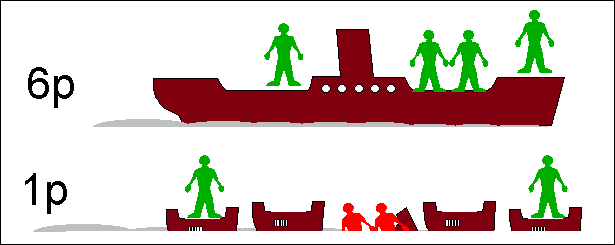 | 1 new arrival
Successful in both scenarios.
|
| |
|
| | 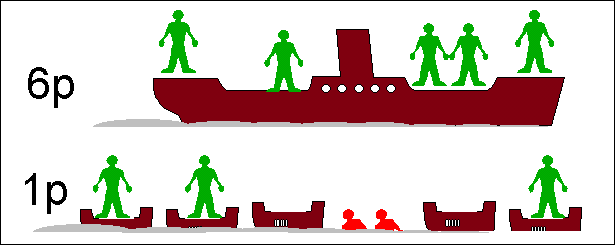 | 1 new arrival
Successful in both scenarios.
|
| |
|
In this example, the non-spread system dropped two packets, which were
delivered in the CDMA system.
However, the CDMA has a longer delay.
An analytical evaluation reveals that in
practical situations, CDMA only helps if receiver can separate signals
adequately. This may be a design challenge. If receiver are less sophisticated,
or if large received power differences are unavoidable, a system without
spreading may perform better.












